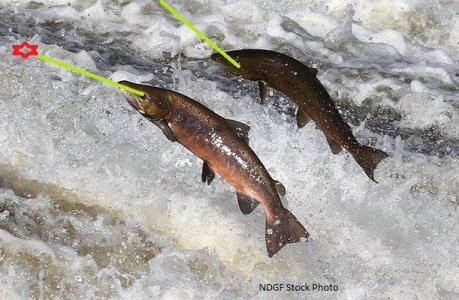In late 2015, the Food and Drug Administration (FDA) gave the greenlight to AquaBounty, Inc., a company poised to create, produce and market an entirely new type of salmon. By combining the genes from three different types of fish, AquaBounty has made a salmon that grows unnaturally fast, reaching adult size twice as fast as its wild relative.
Never before has a country allowed any type of genetically engineered animal to be sold as food. The U.S. is st In order to answer that question, we must first look back on how we as a nation arrived at this point. Historically, the U.S. has enjoyed a rich bounty of seafood from the ocean. When I lived in Alaska, I always loved the late summer months when wild salmon would fill the rivers, making their way to spawning grounds. Fresh, wild salmon filets were delicious and abundant. And they still are.
Unfortunately, outside of Alaska, our poor management of an enormous fishing industry and important habitat has depleted fish stocks all along our coasts. Salmon species, in particular, are sensitive to environmental changes. The development and industrialization of our coast has polluted and dammed the rivers they depend on to breed. Although salmon used to be abundant on both the east and west coasts, large, healthy populations of salmon now exist mostly in Alaska.
Instead of fixing the environmental problems we have created or investing in the protection and recovery of our existing wild salmon resources, some have decided to create a new, genetically engineered fish that brings a host of its own problems and further undermines the sustainability of our food supply.
The genetically engineered salmon that the FDA approved will undertake a journey that stretches halfway around the globe in order to arrive at your dinner table. AquaBounty plans to produce the salmon eggs in a lab on Prince Edward Island in Canada, fly them to Panama to be raised, slaughtered and filleted and then bring them back to the U.S. so they can be sold to your family. How many tons of greenhouse gases are emitted during that 5,000-mile trip?
http://ecowatch.com/2016/04/10/genetically-engineered-salmon-escape-wild/
Never before has a country allowed any type of genetically engineered animal to be sold as food. The U.S. is st In order to answer that question, we must first look back on how we as a nation arrived at this point. Historically, the U.S. has enjoyed a rich bounty of seafood from the ocean. When I lived in Alaska, I always loved the late summer months when wild salmon would fill the rivers, making their way to spawning grounds. Fresh, wild salmon filets were delicious and abundant. And they still are.
Unfortunately, outside of Alaska, our poor management of an enormous fishing industry and important habitat has depleted fish stocks all along our coasts. Salmon species, in particular, are sensitive to environmental changes. The development and industrialization of our coast has polluted and dammed the rivers they depend on to breed. Although salmon used to be abundant on both the east and west coasts, large, healthy populations of salmon now exist mostly in Alaska.
Instead of fixing the environmental problems we have created or investing in the protection and recovery of our existing wild salmon resources, some have decided to create a new, genetically engineered fish that brings a host of its own problems and further undermines the sustainability of our food supply.
The genetically engineered salmon that the FDA approved will undertake a journey that stretches halfway around the globe in order to arrive at your dinner table. AquaBounty plans to produce the salmon eggs in a lab on Prince Edward Island in Canada, fly them to Panama to be raised, slaughtered and filleted and then bring them back to the U.S. so they can be sold to your family. How many tons of greenhouse gases are emitted during that 5,000-mile trip?
http://ecowatch.com/2016/04/10/genetically-engineered-salmon-escape-wild/

